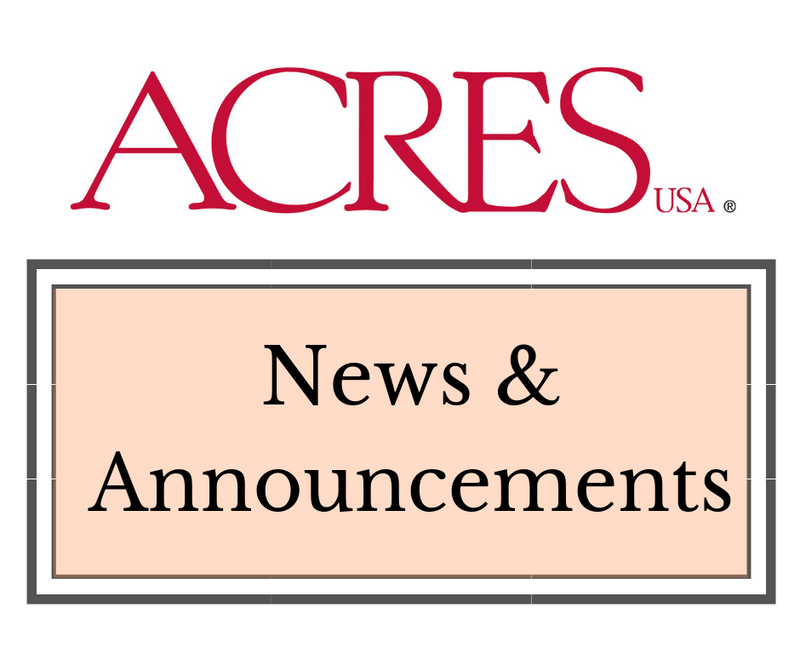Welcome to Book of the Week – a weekly feature offering you a glimpse between the pages of an Acres U.S.A. published title.
This week's Book of the Week feature is Dr. Paul Dettloff's Complete Guide to Raising Animals Organically, by Dr. Paul Dettloff with Megan Dettloff-Meyer.
Add Dr. Paul Dettloff's Complete Guide to Raising Animals Organically to my cart.
From Chapter 10: Reading Hair
You can tell a great many things about bovines just by “reading” their hair coats — of course, you have to know what to look for. The hair coat of a healthy bovine can give you indications of health, production, components, reproduction and behavioral traits. Long haired, poorly mineralized, deficient cows will not show much. They are hard to read.
F. Guenon of Germany spent his life studying the hair coats of cattle and published his findings in 1888. It was reprinted in English in 1913 by Thos J. Hand in New York. Most of the information in this bulletin comes from his work. There are three external swirls of hair that are health indicators:
Pancreatic Swirl

Located ahead of the udder on the lower body. Works for- ward and enlarges with pregnancy. Shows reproductive efficiency.
Thymic Swirl

This is on both sides of neck, starts at lower jugular furrow and comes up. The hair is finer and lays forward and up. Shows a good healthy immune system.
Adrenal swirl

From the ribs back to the para lumbar. May be a shade lighter than surrounding hair. Finer hair laying forward. Tenderloin area. Shows that the endocrine system is working.
Top Line Cowlick

The top line cowlick is located from the middle of the shoulder blades forward. Animals with a large thorax, big heart and high lung capacity have the top of their shoulder blades at the same height as the backbone. Legs should be on the outside wide stance. Cattle with slab sides and high backbones have a small thorax, more respiratory problems and are weak-lunged cows. A cowlick that stands straight up shows a cow with high estrogen. Virgin heifers will often have a cowlick that stands straight up when they start cycling. If the whole mane area stands up, the hair is dull and long and the animal’s a little unthrifty, you may have a magnesium deficiency in feed. Any animal that is 31⁄2 – 4 months pregnant should have a swirl that lays down since they have lower estrogen and higher progesterone from yellow body-corpus luteum of the ovaries.
Butterfly Udder Swirls

On the back of the rear quarters, check for a butterfly wing on each quarter. This is a sign of high milk protein. In a 50-cow herd, you will usually see two to four cows that will vividly display this and they will be very high milk protein cows consistently. Watch the quality of the hair on the udder. Long, coarse hair means the cow will not be a good milker. Fine, short, silky hair on the udder is most desirable. It indicates a good producing cow.

Any long, coarse hair on the udder is not a good sign for production.
A thick-skinned cow is not a quality-milk cow. Cows with thin, silky skin tend to be better for dairy. This was noticeable on cows that I did displaced abomasum surgery on. Skin thickness varies very noticeably. When sewing cows up, the skin of some would be so thick it was hard to get the needle through. For others, it was a snap. The thin-skinned cows that were a breeze to sew on did a better job. Any incision that got infected always seemed to be on a thick-skinned, big, coarse-haired animal. I must add that very few got infected, but a few do become infected in a barn atmosphere.
Learn more about Dr. Paul Dettloff's Complete Guide to Raising Animals Organically.
Add Dr. Paul Dettloff's Complete Guide to Raising Animals Organically to my cart.
About the Authors:
Paul Dettloff, D.V.M. was raised on a farm in Minnesota and graduated from the University of Minnesota School of Veterinary Medicine in 1967. Though he began as a conventional practitioner, he moved into the sustainable and organic/biological treatment of dairy and beef cows, sheep and goats using natural remedies, botanicals, homeopathy and holistic management of the soil and entire farm. He is an international authority on the natural farming and consults and lectures widely.
Megan Dettloff-Meyer, L.Ac., MSOM is a nationally certified acupuncturist, Oriental medicine practitioner and diplomat in Chinese herbology. She operates Dr. Paul’s Lab, a maker of herbal remedies.
Other Titles by these Authors:
- Alternative Treatments for Ruminant Animals, by Dr. Paul Dettloff
Similar Titles of Interest:
- Cure Your Own Cattle, by Newman Turner
- The Barn Guide to Treating Dairy Cows Naturally, by Hubert Karreman
- Natural Cattle Care, by Pat Coleby
Share:

0 comments